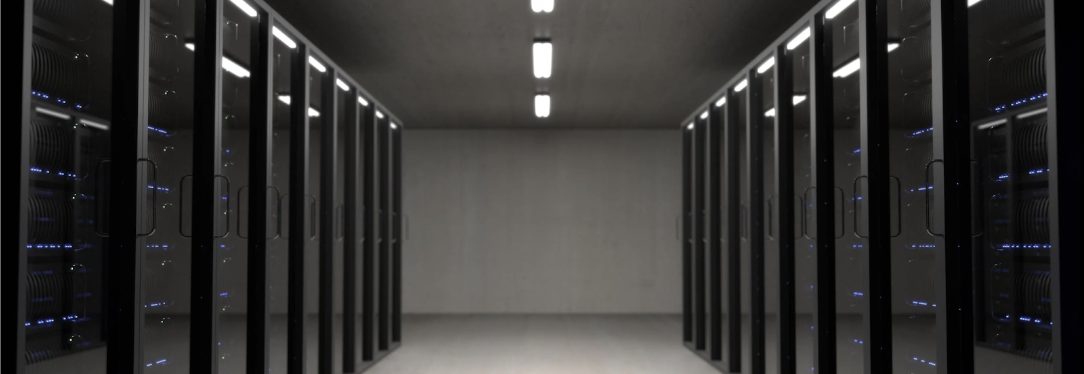AI’s growing influence in the work environment
In mid May, OpenAI launched their latest language model GPT-4o. From solving maths problems interactively, playing the judge in a rock-paper-scissors-game to helping with real time translation, the model breaks the current boundaries of language-based AI. It’s hard to put the wonders of technological advancements into words, so head over to OpenAI’s live demo page to see for yourself. Imagine the advantages such a model can bring into the work context: It already is applied in research, for phrasing emails, data analysis and organisation and it could replace the traditional brainstorming session with your colleagues by giving you a variety of ideas in a heartbeat.
GPT-4o is just one of many examples of innovative AI that is currently accelerating the ways in which technology makes human workdays easier. Put simply, Artificial intelligence is, according to IBM, ‘a technology that can simulate human intelligence and problem-solving capabilities’. AI Applications which are able to simulate the decision-making process happening in the human brain often make use of neural networks. In the case of deep learning algorithms, a deep neural network which consists of multiple layers is needed to give an output to a complex question. This is happening through multiple hidden layers in the network, in which the algorithm combes through massive amounts of data. A typical example of an application using this kind of technology are virtual assistants and chatbots on websites.
Through these innovations, AI is slowly changing the ways in which companies and their employees work. A 2023 survey done by OECD, performed in workplaces in Austria, Canada, France, Germany, Ireland, the United Kingdom and the United States found that AI is already being used in areas such as data analytics, fraud detection in the finance sector, the planning of production processes and maintenance tasks in manufacturing.
AI - A climate hero?
Recently, AI has found its way into the climate sector, and more specifically, in the field of decarbonisation. It is being tested and used in different fields, such as:
- Optimising energy use: AI can screen massive amounts of data on energy consumption in buildings and factories. By analysing patterns and predicting future requirements, AI can adjust and optimise heating, cooling, and other systems to minimise energy waste, and thus significantly reduce emissions.
- Managing power grids: Integrating renewable energy sources like solar and wind into the power grid is a challenge due to their variability and a lack of efficient storage technology. AI can predict energy generation and consumption fluctuations, allowing for smoother grid management and better integration of renewables.
- Making transportation more efficient: AI can optimise traffic flow in cities, reducing congestion and idling times – both major contributors to emissions. It can also help with route planning for delivery trucks and public transportation, minimising travel distances and fuel consumption.
- Improving supply chains for sustainability: AI can analyse complex supply chains and identify areas for enhancement. This can help companies source raw materials from sustainable sources and optimise logistics to minimise emissions from transportation.
Applying AI for climate action is also a trend spilling over into impact entrepreneurship. Some startups are even building their entire business model around AI: At Impact Hub Berlin, there are also impact entrepreneurs which embed AI at the core of their business models. For example, CinSoil, a startup from the current ImpAct Accelerator on sustainable food systems, helps businesses to understand their carbon footprint and opportunities to enhance their soil at the farm level with the help of remote sensing and AI. Another innovative startup from the Impact Hub Berlin Community is Skonelabs, they are aiming to reduce food waste through employing AI that helps to sense quality changes in food and thus detect food spoilage before it occurs.
Another changemaker from the Impact Hub Berlin community active in the climate sector using AI is NUMCAMP. With their intelligent and cloud-based software EnPI, they strive to help businesses get insights and enhance their energy and climate management.
Apart from helping businesses and impact entrepreneurs in optimising decarbonisation efforts, AI can also help to make scientists better predictions when it comes to climate foresighting scenarios and climate modelling. For example, the UNDP Panama Accelerator Lab recently executed an exercise with students from Panama University, where they were asked to bring pictures from familiar neighbourhoods, then upload them to an AI which allows real-time rendering of images through prompts. They created dystopian and utopian images of their familiar surroundings, which resulted in an effective and easy awareness-raising for the effects of climate change. Copying this method to generate dystopian pictures of other, familiar places has a great potential to influence citizens and potentially politicians on the regional and national level to advocate for stricter climate policies.
Another way in which AI can help to spur behaviour change is to showcase the financial losses that corporates have to expect in different climate scenarios. Bloomberg and Riskthinking.AI have launched an AI data tool which can ‘predict businesses financial exposure to the physical risks of climate change’. The scenarios are based on the Intergovernmental Panel on Climate Change’s (IPCC) official climate scenarios. Both corporations as well as investors can get a better understanding about financial risks, which might inspire them to make changes towards enhanced climate adaptation.
Hidden costs of powering AI
While AI’s abilities to support the fight against climate change and enhance decarbonisation efforts are truly helpful, it is important to acknowledge that deploying it has a vast environmental impact itself. To run AI, both hardware as well as software resources are needed.
As AI needs to run massive amounts of data to model human-like decision-making processes, there is a need for servers. As changingworlds.ai has analysed, in the case of ChatGPT, a reliable and powerful server infrastructure is crucial to maintain the service on optimal level and make it accessible to users worldwide. ChatGPT is in the cloud, most likely using the Microsoft Cloud service Azure. The physical location of cloud services are data centres, huge rooms with multiple powerful servers inside. In order to build data centre equipment, for example drive boards, there is a need for (critical) raw materials such as gold, silver, palladium and rare earths such as dysprosium, neodymium, and yttrium, according to Tempro project. Mining or harvesting these raw materials creates carbon emissions and uses a huge amount of freshwater. On top of that, more freshwater is needed to cool data centres: AIfor education.io estimates that about 16 oz. of water are needed for every 5-50 AI prompts. The Guardian fears that limiting the need for fossil fuels might jeopardise the goal for everyone to have safe access to drinking water in the long term.
When it comes to software, data centres are already responsible for about 1-1.5% global electricity use, and with the rise of AI, this percentage might significantly increase in the future. Scientific American found that “a continuation of the current trends in AI capacity and adoption are set to lead to NVIDIA shipping 1.5 million AI server units per year by 2027.” NVIDIA, the biggest player producing microchips strong enough for generative AI applications, would with these 1.5 million servers, running at full capacity, contribute to a consumption of “at least 85.4 terawatt-hours of electricity annually—more than what many small countries use in a year”. And since the world still depends on generating electricity from fossil fuels, this amount of power would again, drastically boost carbon emissions.
Another aspect important to consider when it comes to negative impacts of AI is a financial one: Last year, Bloomberg NEF estimated that it would cost around $196 trillion in investments to get to net zero carbon emissions globally by 2050. With such immense investments, it is clear that every penny spent needs to be considered carefully. With the current attention that AI receives for its abilities to combat climate change, there is the danger that much needed funding will be given to AI innovations which are not developed yet, instead of proven and very effective methods, such as restoring natural carbon sinks.
Helping or hindering - an individual analysis
So what can we take away from this? Whether AI is an ally or an obstacle of climate action strongly depends on the context. Certainly, there are some things which can be done to reduce the environmental impact of AI:
For example, setting up a circular economy for critical raw materials and rare earths needed for data centre equipment, can ease the need for virgin raw materials and negative climate impact from mining. At Impact Hub Berlin, one impact topic is circular economy, where changemakers come together and support each other to build more circular value chains.
What’s more, the tremendous need for electricity of AI shows once more that the need for renewable energy is ever increasing. Decoupling the energy system from fossil fuels will be crucial for future-proofing the AI revolution, making sure that AI can truly be a force for sustainability. Working on making AI more energy-efficient can be an interim goal, to secure that carbon emissions stick to a minimum.
And ultimately, it is important to use AI responsibly. There is no one-size-fits all, which is why it is every individual’s, entrepreneurs and business’ responsibility to monitor their use of AI critically, and to thoroughly understand and calculate the carbon emission their activities generate, and then benchmark this against the potential carbon emission reduction. Luckily, some entities already work on bettering the use of AI towards more sustainability. For example, Harvard Business Review published recommendations on ‘how to make generative AI greener’.
But using AI responsibly even goes beyond its actual use, it also includes to critically acknowledge that it is no holy grail, but that it is just one piece of a thousand different measures we need to take to reduce emissions. So instead of putting all the bets (and the money) on AI, and technological advancements in general, we need to start increasing our ‘natural intelligence’, a term that has been shaped by Thomas Klaffke in a recent creative destruction article. Focussing on restoring biodiversity, natural processes and using methods like biomimicry, as well as protecting natural habitats should play at least an equally important role.

And while there is a common responsibility to further educate, understand and track the environmental impacts of AI, there also is a responsibility to understand and tackle the negative social impact of AI - for example, the unequal access for people around the world to use AI and the inherent bias of AI, which may lead to further inequality for already marginalised groups. We recently discussed this in an interview with the founder of all.txt, Nora Mathelemuse.
At Impact Hub Berlin, we believe in innovation, and thus embrace the opportunities that AI will bring. With our community of impact entrepreneurs and changemakers, we are certain that we can collaborate to innovate solutions to make AI an ally in the fight against climate change - while keeping its use responsible.




